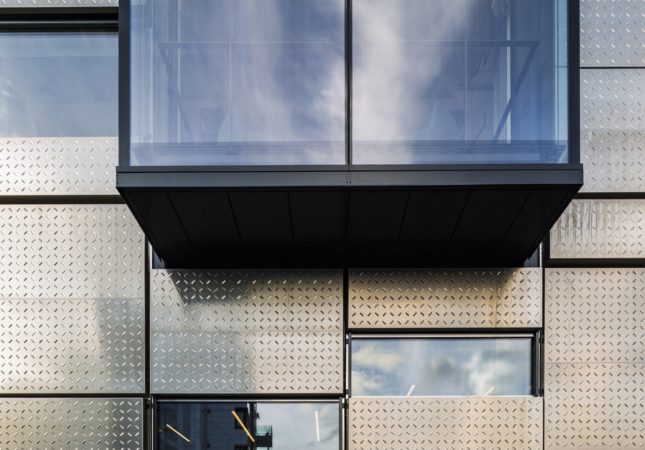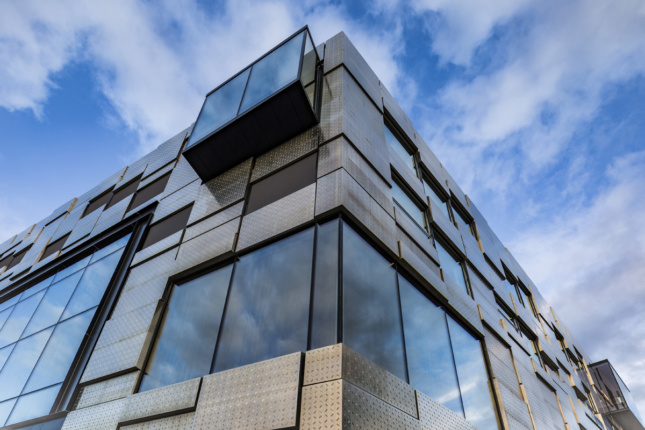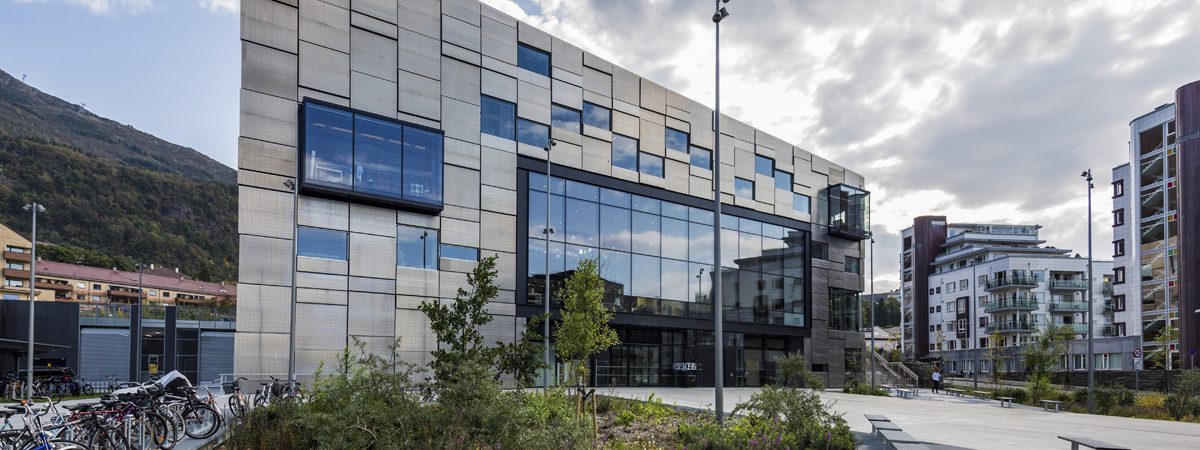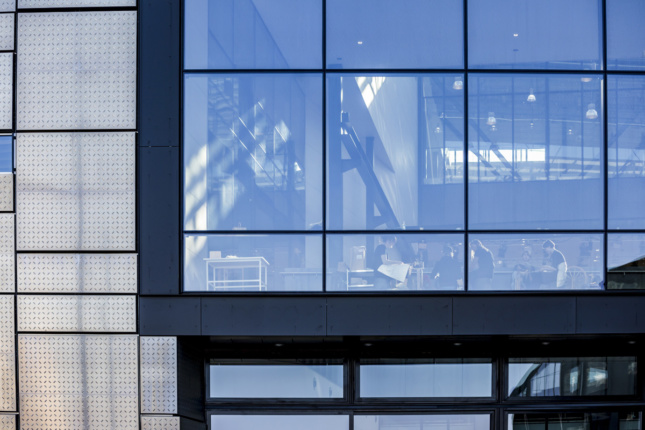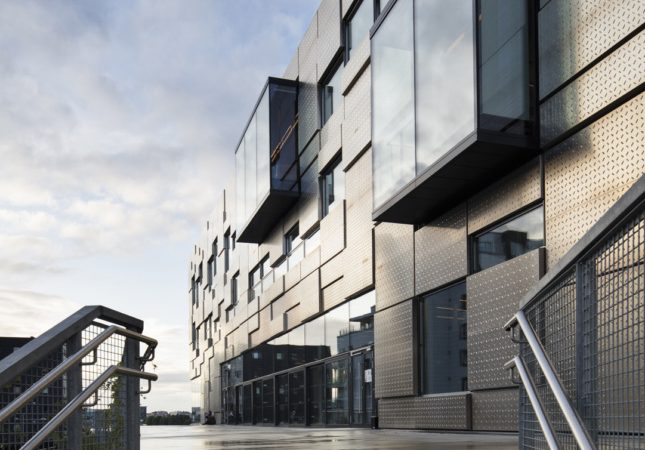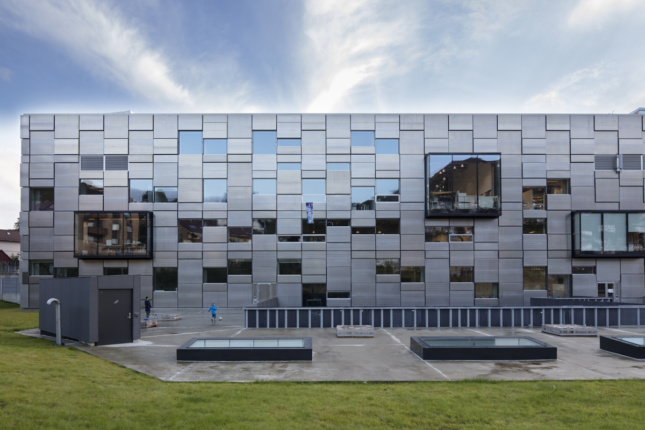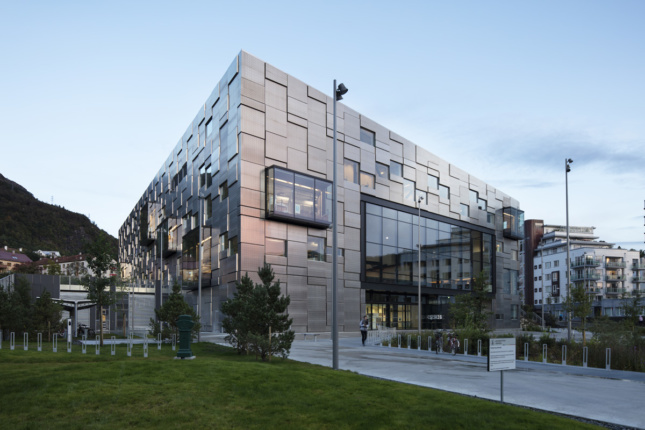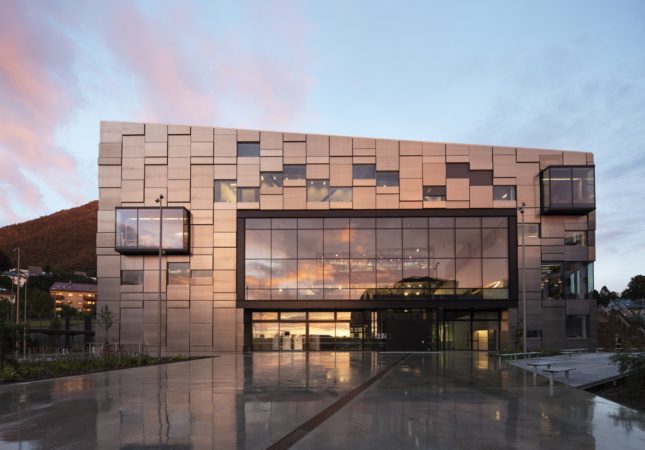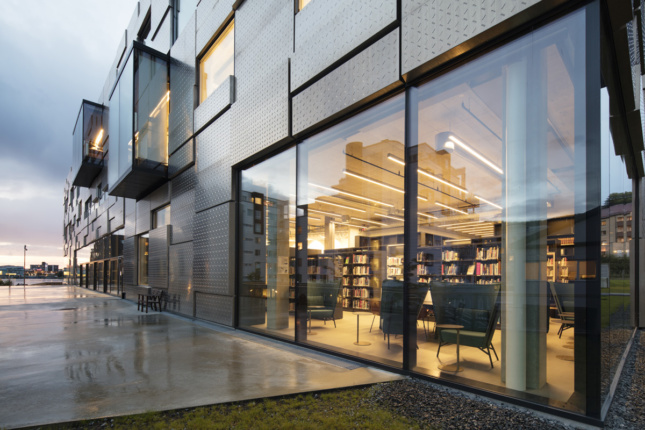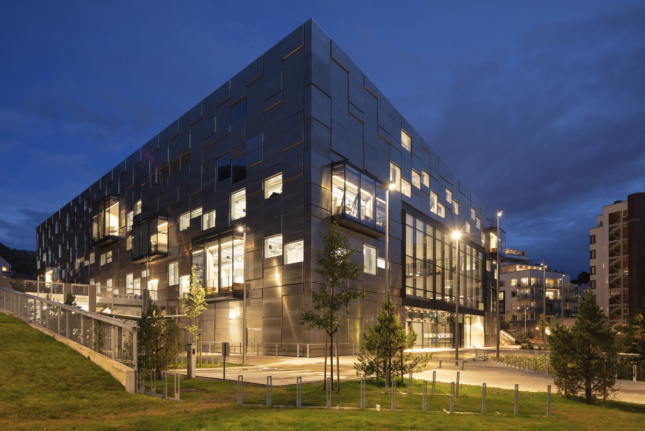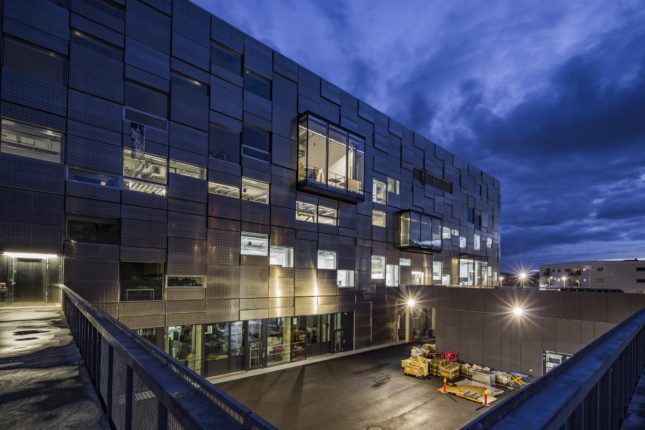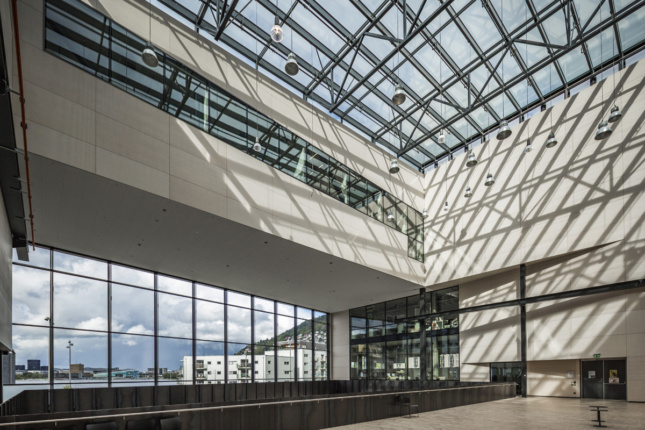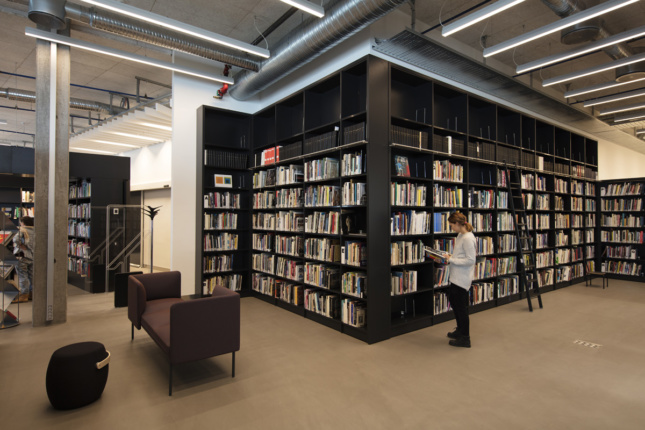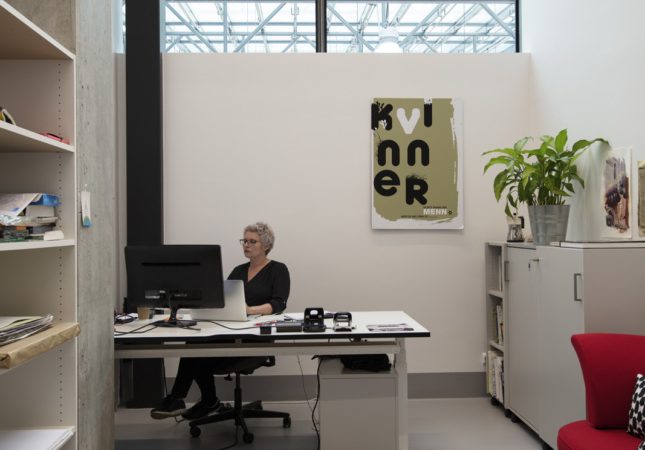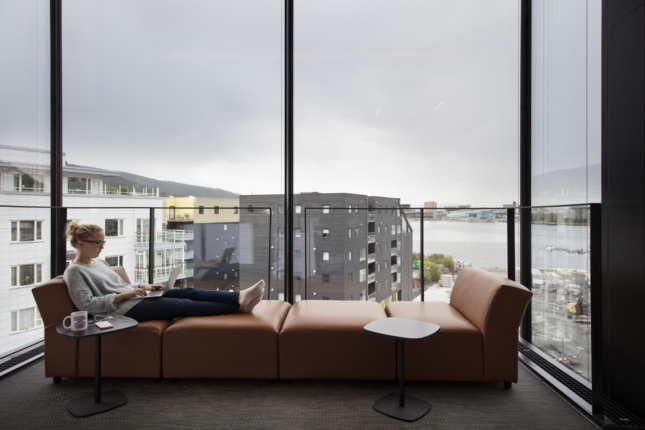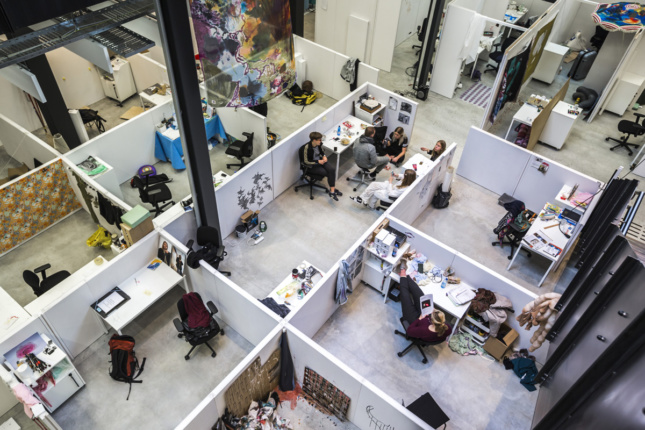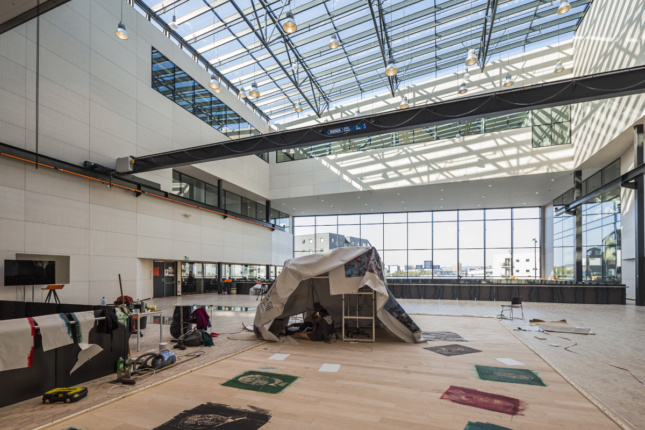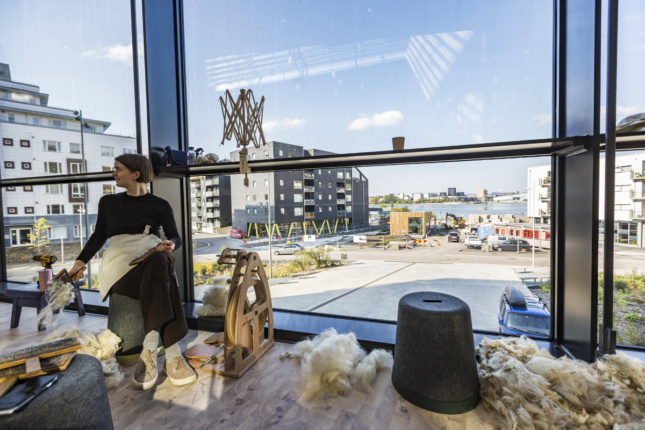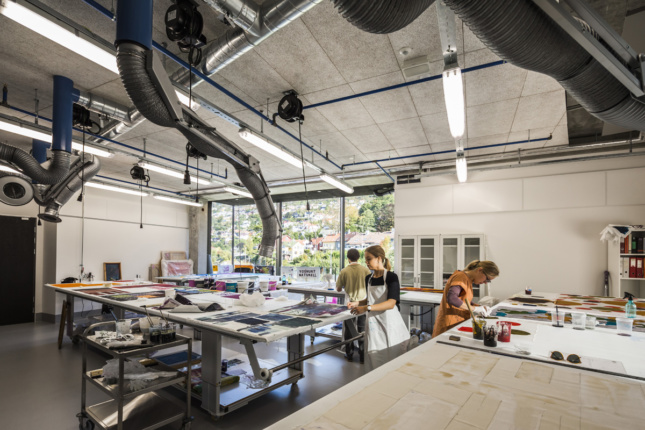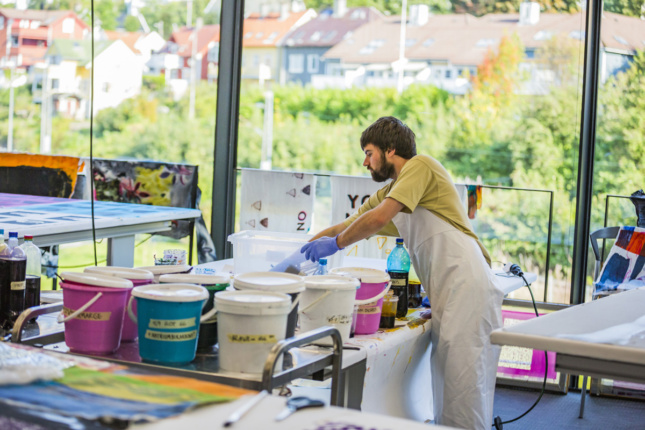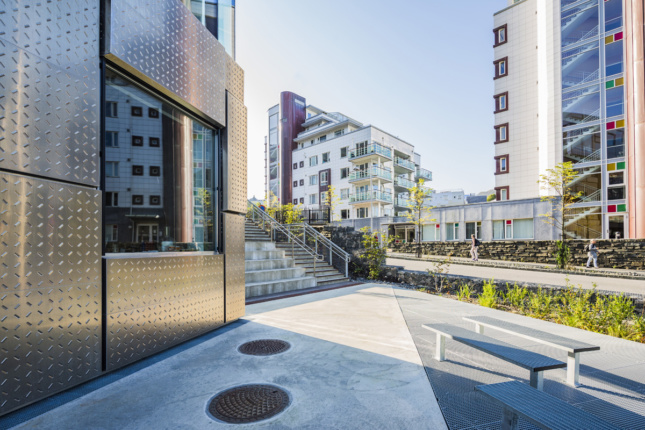Snøhetta’s design for the Faculty of Fine Art, Music and Design (KMD) consolidates six previously scattered academic buildings into one multi-use cross-disciplinary building. The cultural landmark offers new public space and symbolic connectivity between the university and its Norwegian town. The architects sought to produce a facility that offered an “ideal and malleable space for artistic expression.” They utilized robust, durable materials to withstand harsh workshop-like interior environments and a climate that is notoriously rainy. “The objective is to free students and staff from limitations by surfaces and materials,” said Snøhetta in a recent press release.
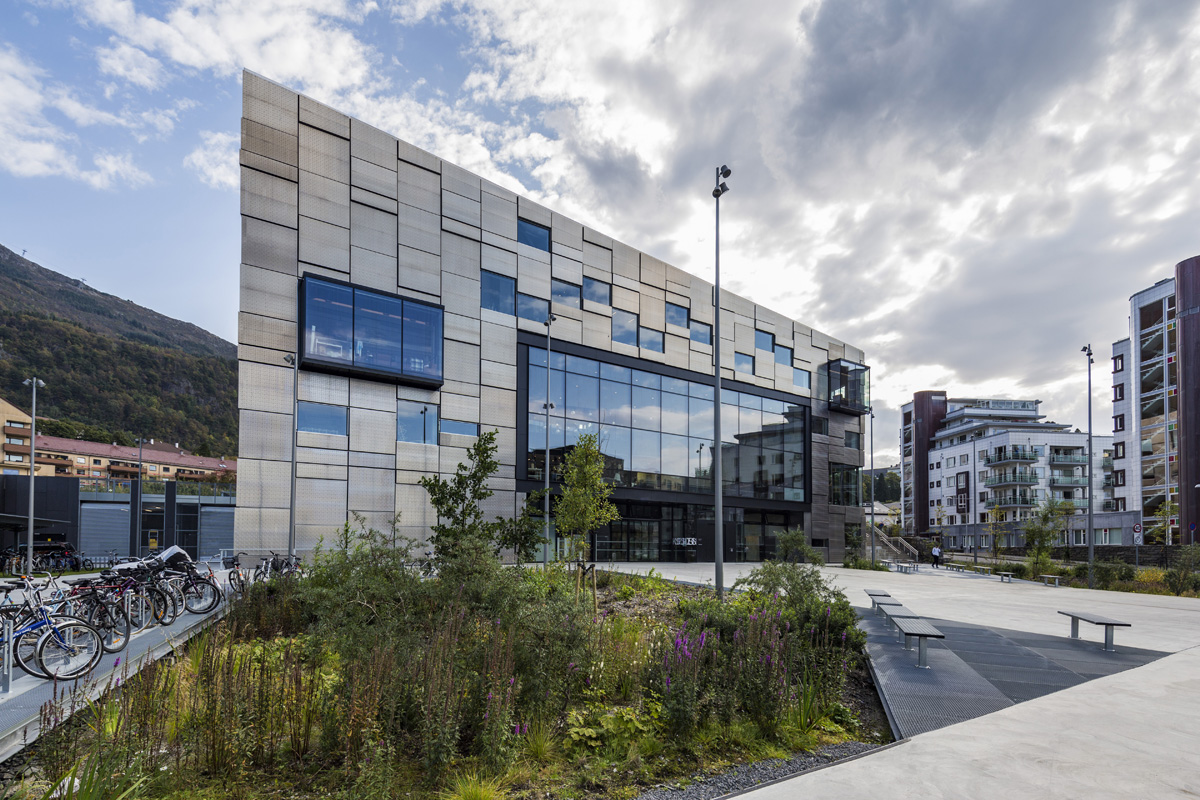
- Facade Manufacturer
Metha (aluminum); Schuco (glazing) - Architects
Snøhetta - Facade Installer
Bolseth Glass - Facade Consultants
Rambøll (structural engineering); Bolseth Glass (facade consultant) - Location
Bergen, Norway - Date of Completion
2017 - System
Rainscreen wall assembly composed of approximately aluminum-clad 10-inch Rockwool sandwich panel, and 2-inch drywall cavity on interior side for electric infrastructure - Products
Schuco glazing system delivered by Bolseth Glass; custom aluminum panels by Metha
KMD pairs two axes: an internal corridor dedicated to students and staff, and an external corridor open to the public. The two spaces intersect each other, forming what the architects call one of the most prominent features of the building: a 14,000-square-foot project hall. “It is here, in the transition zone between the public and the private sphere of the school, that the building offers exciting opportunities for students, professors, and visitors to connect, discover, and learn from one another.” The building’s entrance is connected to a large outdoor public plaza, which together with the large glass wall of the project hall, makes KMD an inviting and open building in dialogue with the city center of Bergen.
The building envelope features over 900 panels of pre-fabricated raw aluminum panels, specifically designed in variable dimensions and depths to produce a dynamic composition. The panels feature a custom patterning developed by Snøhetta and custom-made by local manufacturer Metha, based in the city of Røros just south of Trondheim.
The aluminum-folded rainscreen cladding panels offset approximately four, six, and eight inches from the insulation line. Each set folds at the same angle, creating variations in the sizing of the shadow gap between the cassettes. By varying the depth of the facade, the building offers unexpected shadows cast by dynamic atmospheric conditions along Norway’s west coast.
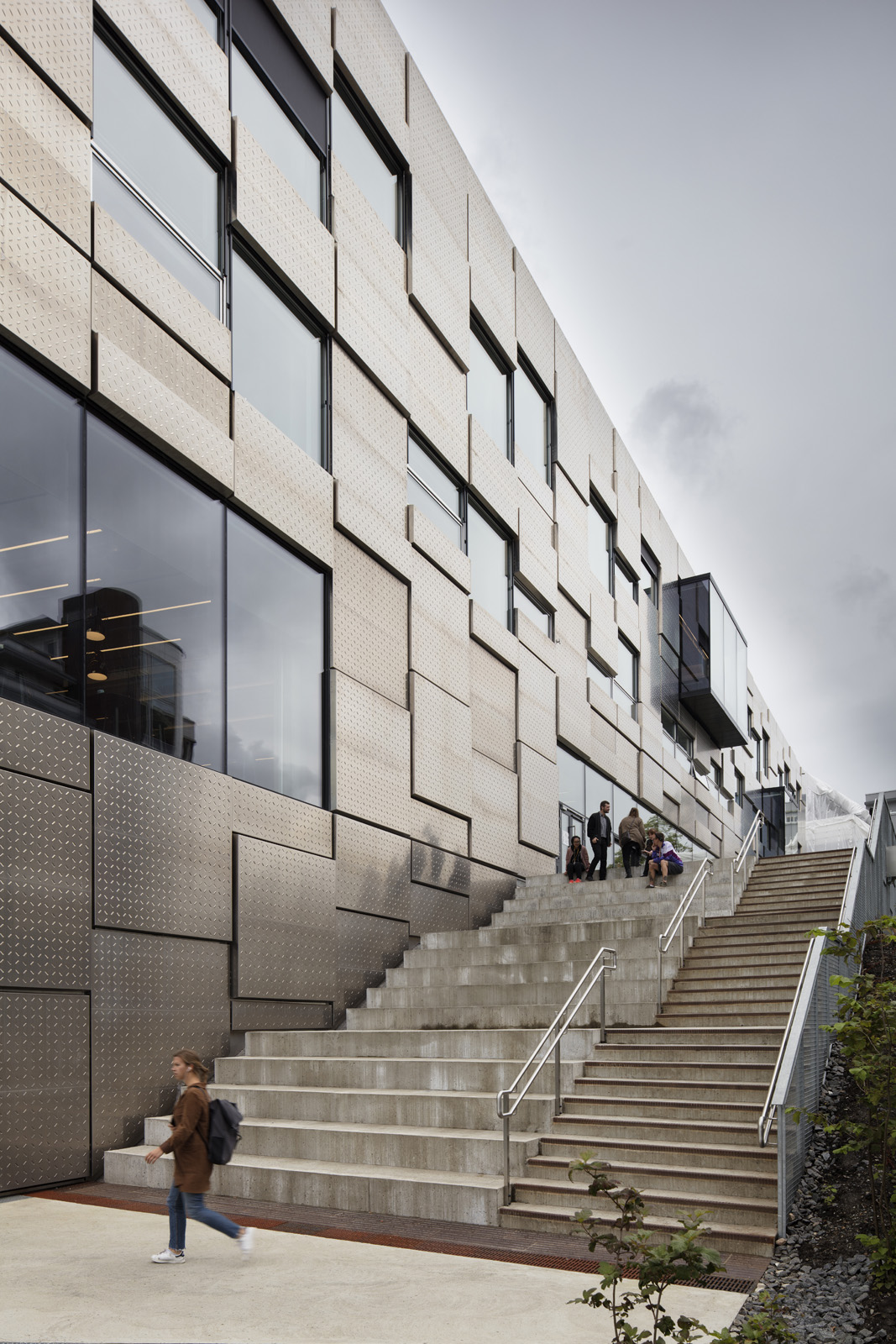
The architects say durability and robustness were “keywords” that helped guide all decisions made throughout the facade design process. “The rainy and sometimes stormy coastal climate demands all exterior materials to not only withstand harsh conditions but to weather in a way that highlights their unique qualities over time. The crude aluminum surfaces will gradually age and naturally oxidize, heightening the variations in colors and textures.”
This robust and playful expression gives great flexibility when planning for windows and lighting conditions. The windows of the building are set at different heights, slipping into Snøhetta’s intentionally varied compositional scheme. This seemingly haphazard positioning allows for opportunistic interior moments where usable wall space and daylighting considerations can be maximized based on programmatic necessities. Large delicately-detailed cantilevered glass volumes, the result of a successful collaboration with Bolseth Glass, interrupt the syncopation of aluminum at key moments in the building layout. Furthermore, a large glass roof aids in the distribution of daylight into the building.
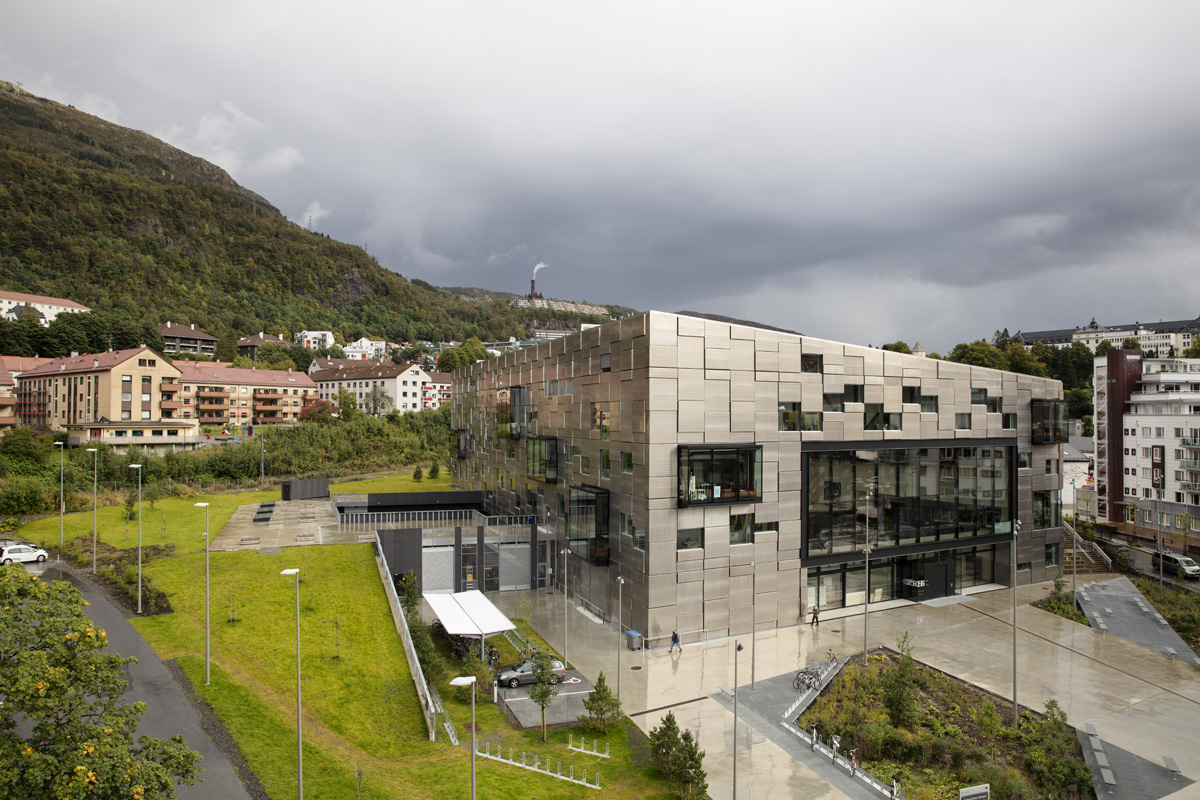
The building is currently in its inaugural academic year, having opened this past October 2017.
